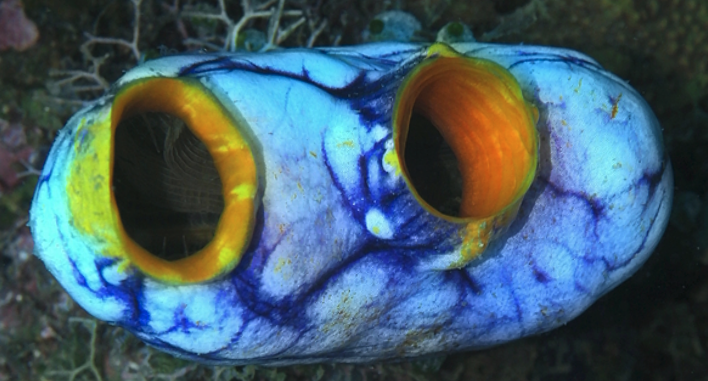The sea squirt is much beloved by neuroscientists. It has a brain, but with only 177 neurons—somewhat less than our estimated 100 billion. So it’s possible to make a complete map of its cognitive apparatus.
But here’s what’s interesting. The sea squirt starts out looking rather like a tadpole, and it swims around searching for a suitable rock. It uses its brain for the swimming around. When the critter has found a rock, it latches on and never moves again.
Not needing to move, the sea squirt has no further use for its brain. So it eats it.
Fast forward a few million years in evolution. In mammals and primates, the same neuronal chemistry developed massively in sophistication and scale. But the basic logic was retained. Our neurons first evolved to guide movement. Even to this day, abstract thinking is closely allied to physical action. It’s easy to discover this by looking at words and their origins. Take one simple example: “abstract” means “to drag away.”
Thinking and movement are inextricably entwined.
Neurons developed over a fairly short period of evolutionary time to help animals get from one place to another, avoid danger, and find mates and food. Even at the highest levels of cognition, our minds are still rooted in physical action.
Thinking is Movement
From the brain’s point of view, thinking itself is a form of movement: invisible maybe, but real. It’s a way of getting from one mental “place” to another. This gives us a useful way to evaluate the quality of thought.
Let’s adopt a hypothesis: Good thinking is the product of a mobile mind. Bad thinking is the product of a static mind. You could test this hypothesis by observing your own thinking, but it’s difficult to be impartial about oneself! It’s far easier to watch how others think, whenever you’re reading or listening to people talk. Ask yourself how easily their minds are moving.
Once you set mental mobility as the standard, you begin to see where thinking breaks down. The opposite of mobility is a mind that’s tight and contracted. What does that look like? Here are seven symptoms:
- Rigid attachment to fixed ideas
- Repetitious thinking
- One-dimensional thinking
- The trap of a single viewpoint
- Excessive focus on detail
- Excessive generalization
- Information avoidance
Mental contraction, like muscular contraction, easily becomes habitual. It hardens over time.
There are three primary costs of mental immobility. The costs are proportionally higher when you’re thinking about something important to you.
- You take less information into account
- You uncover fewer possibilities
- You find it harder to arrive at a clear conclusion
Or to put it more starkly, you gum yourself to a rock and eat your own brain. Fortunately, it only takes a clear intention and a little skill to get the mind moving again!
Think Better! Try Braincat Today.
